NAB Show 2025: Industry confronts transformation as technology and viewer habits evolve

Subscribe to NewscastStudio for the latest news, project case studies and product announcements in broadcast technology, creative design and engineering delivered to your inbox.
As the broadcast industry prepares to gather for the NAB Show this April, professionals face a landscape in flux, driven by technological advancements, shifting viewer preferences and financial pressures.
The annual trade show will showcase how traditional broadcasters and streaming platforms are adapting to profound changes across content creation, distribution and monetization.
But this year’s event will also look a bit different – with many skipping the show floor due to travel advisories and economic uncertainty.
Produced by the National Association of Broadcasters, the event is the industry’s premier marketplace for technology and attracts professionals from across the global media ecosystem. This year’s show arrives as companies navigate competing priorities: embracing innovation while controlling costs, expanding content offerings while maintaining quality and developing sustainable business models in an increasingly fragmented environment.
“Revenue isn’t growing as fast as it used to, and costs are rising,” said Steve Reynolds, chief executive officer of Imagine Communications. “The shift toward multiplatform distribution has introduced new expenses, as companies must now produce, format, and manage content across broadcast, streaming, direct-to-consumer, and mobile services.”
This financial reality underpins many conversations across the industry, driving a push for workflow consolidation and operational efficiency.
According to Reynolds, early approaches to streaming often involved separate production chains for different platforms, “resulting in redundant expenses without driving additional revenue. Now, the focus is on eliminating these inefficiencies by unifying production workflows.”
The monetization landscape has shifted as traditional broadcast models face disruption from streaming services and evolving consumer preferences. Industry leaders are reimagining revenue strategies to maintain profitability while meeting audience expectations across increasingly fragmented distribution channels.
“A fundamental shift in viewing habits has led to a paradigm change in monetization,” Reynolds noted. “While traditional broadcast remains viable, the rise of linear streaming and on-demand platforms has reshaped how audiences consume content. This shift has fragmented the audience, making it increasingly challenging for advertisers to reach consumers effectively.”
Free ad-supported streaming television (FAST) and AVOD continue to grow, offering viewers content in exchange for watching advertisements. These models has gained traction as media companies seek to exploit existing content libraries while reaching new audiences.
“Monetization will remain central to the NAB conversation, particularly with the accelerated adoption of free ad-supported streaming television,” said Anupama Anantharaman, vice president of product management at Interra Systems. “Broadcasters are prioritizing solutions that balance ad relevance with seamless viewer retention, moving beyond basic insertion tactics to contextual alignment.”
Adtech, such as dynamic ad insertion technology, has become crucial in this environment, enabling personalized advertising across platforms while maintaining viewer engagement.
“Dynamic ad insertion is a hot topic this year. According to Bitmovin’s latest Video Developer Report, ad insertion is the number one biggest challenge faced by video developers today,” said Paul Davies, head of marketing at Yospace. “With an increase in streaming viewership alongside this increase in advertising deployments, the need to maximize revenues using DAI has never been greater.”
Industry leaders also noted a significant shift in how advertising inventory is valued, with renewed emphasis on context and content quality.
“We’ve seen the pendulum swing toward an impression-based model, where every ad placement was treated as interchangeable, leading to a race to the lowest price,” Reynolds explained. “But now, the industry is shifting back, recognizing the importance of advertising in context and the value of premium programming. Advertisers and content owners are rediscovering that where an ad appears matters — not just who sees it.”
The migration of premier live events from traditional linear broadcasting to streaming platforms is accelerating this conversation around content distribution and monetization.
“Once the crown jewel of linear broadcast networks, sports and other big events are quickly moving into the streaming realm,” said Dave Dembowski, senior vice president of global sales at Operative. “Just because streaming is digital doesn’t mean media companies are going to automate ad sales on their top content – they’re adopting tried and true up-front fixed ad sales models, but they still want the benefits of dynamic ad delivery and reporting.”
Remote production technologies continue to reshape content creation, enabling more efficient resource allocation and expanded coverage capabilities. The COVID-19 pandemic accelerated an emerging shift, and what began as a necessity has evolved into a strategic advantage for many organizations.
“Remote and cloud-based production and distribution are redefining live event coverage,” said Rob Szabó-Rowe, global head of engineering and product management at Tata Communications. “Traditional on-site production models are giving way to off-site centralized and distributed workflows, allowing content owners and rightsholders to boost efficiency, cutting down on travel for talent and crews and the shipping of equipment. These approaches not only cut costs but also enable production teams to cover multiple events in the same day without increasing resources.”
The industry is largely embracing a hybrid approach that strategically leverages both cloud and on-premises infrastructure to optimize performance and cost-effectiveness.
“For 24/7/365 operations, maintaining an on-prem infrastructure is often more cost-effective than running continuous cloud-based workflows,” Reynolds noted. “The industry’s focus has now shifted to a hybrid approach, leveraging the cloud where it makes sense — live events and geographically distributed redundancy to name a few — while maintaining on-prem infrastructure for cost efficiency.”
These remote workflows create new challenges around security and asset management. As broadcasters shift toward cloud-based workflows, cybersecurity is more important than ever, continuing to move engineering into the realm of IT.
“Cybersecurity will be a major talking point, especially as broadcasters continue shifting and experimenting with software-based and cloud-driven production workflows,” said Simon Hawkings, director of sales strategy and business acceleration at Ross Video. “Security vulnerabilities in media systems have already led to several major hacks, and there’s a growing need for secure-by-design solutions.”
The complexity of modern security requirements is driving many broadcasters toward partnerships with specialized providers who can manage these challenges.
“Technology on its own doesn’t solve the challenge of operational complexity,” said Venugopal Iyengar, chief operating officer of digital at Planetcast. “Many broadcasters are looking to service providers that offer not just software, but fully managed, end-to-end solutions.”
Artificial intelligence has moved beyond hype to deliver tangible applications throughout the media ecosystem. Industry leaders are focusing on practical AI implementations that solve real-world challenges while improving efficiency and enhancing viewer experiences.
“AI has long been a buzzword and while it continues to be one now, I expect we’ll see a shift toward more concrete and complete AI applications,” said Julien Signes, executive vice president of video network at Synamedia. “I anticipate video service providers will look for more tangible benefits and new ways to leverage AI to better improve efficiencies across the video distribution and delivery ecosystem.”
Media asset management is a major beneficiary of AI implementation, with new capabilities transforming how organizations interact with their content libraries.
“We believe AI-driven video discovery will be at the forefront of the conversations on media production efficiency and workflow at the 2025 NAB Show,” said Frederic Petitpont, CTO and co-founder of Moments Lab. “Many of Moments Lab’s clients often share their frustration and struggles with complex DAM and MAM systems, which limit their ability to quickly locate and use content. By using AI video indexing, media professionals can leverage natural language queries to search vast video libraries seamlessly.”
The evolution of content consumption patterns continues to shape strategic decisions across media and entertainment. The explosive growth of short-form content, particularly among younger audiences, represents both a challenge and opportunity for traditional broadcasters.
“OTT consumption is trending heavily towards short-form content across all demographics, but with Gen Z in particular redefining new viewing habits,” said Paul Pastor, co-founder and chief business officer at Quickplay. “This change in viewing behavior requires a strategic reimagining of audience engagement.”
Recent research by GenZ Insights in collaboration with Quickplay and Toluna underscores this change, noting that Gen Z viewers spend over three hours daily on short-form platforms compared to just one hour on streaming and broadcast combined.
“Today, platforms like TikTok and YouTube capture a growing share of eyeballs across audiences but that doesn’t have to be the case – with a well-thought out strategy for Shorts, streamers and broadcasters can not only compete, but they can win the battle for viewers,” Pastor added.
Technical innovation continues to enable these expanding content formats and distribution methods, with compression technology and format evolution driving significant change across media workflows.
“Growing adoption of JPEG XS for high-quality, low-latency transmission is perfect for remote production of live sports,” said Szabó-Rowe. “JPEG XS enables the transport of SMPTE 2110 streams, which supports the production of and delivery of higher-resolution video to meet consumer demand for 4K and HDR content.”
The transition to IP-based workflows remains a cornerstone of modern broadcast infrastructure, representing a fundamental shift from traditional SDI-based systems to packet-based networks that offer greater flexibility, scalability, and interoperability.
“It’s certainly going to be another big year for SMPTE 2110, especially as more of the IP video workflow pieces come together,” said Abe Abt, senior product consultant at AJA Video Systems. “IP video in general will be a huge topic, as it simplifies processes and makes infrastructure more scalable.”
As the NAB Show approaches, these interrelated trends in monetization, production technology, security, artificial intelligence and content formats will shape conversations among broadcasters, technology vendors and content creators navigating an increasingly complex media landscape. The industry’s focus on balancing innovation with practicality reflects the fundamental challenges and opportunities facing media companies today in an environment of rapid technological and consumer behavior change.
View our full preview series:
Subscribe to NewscastStudio for the latest news, project case studies and product announcements in broadcast technology, creative design and engineering delivered to your inbox.


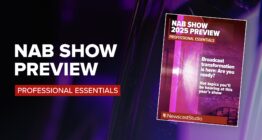
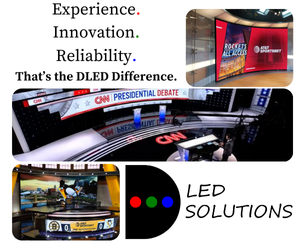

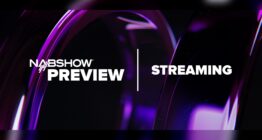
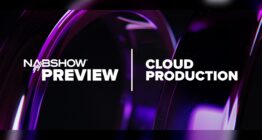





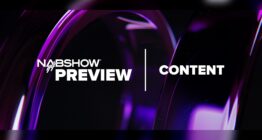



tags
Abe Abt, AJA Video Systems, Anupama Anantharaman, Dave Dembowski, Frederic Petitpont, Imagine Communications, Interra Systems, Julien Signes, Moments Lab, NAB Show 2025, NAB Show News, Operative, Paul Davies, Paul Pastor, Planetcast International, Quickplay, Rob Szabó-Rowe, Ross Video, Simon Hawkings, Steve Reynolds, Synamedia, Tata Communications, Tata Communications Media, Venugopal Iyengar, Yospace
categories
Heroes, NAB Show